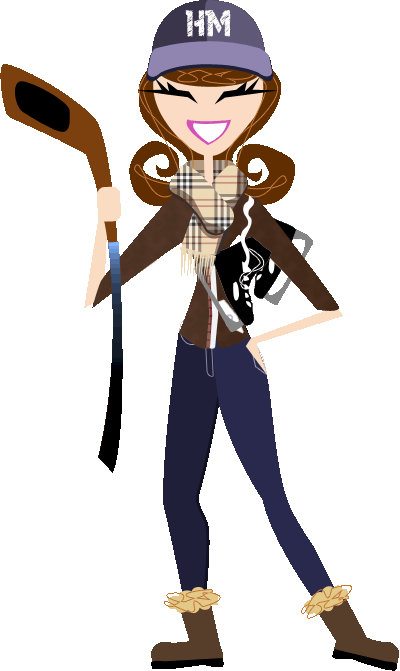

HockeyMom.Com
Where It's Game On!
ICE HOCKEY 101
So you are a hockey mom (or dad) and want to learn the game... Here are some key things to know!
BASICS:
Goal:
A goal is awarded when the puck entirely crosses the red goal line between the goal posts. The player who shoots the puck into the net or who was the last player of the scoring team to touch the puck is credited with the goal.
A goal is disallowed if the puck was thrown or otherwise intentionally directed into the net by an attacking player by any means other than his stick. The puck, however, can be deflected off a skate or the attacking player's body into the net if it was unintentional. A goal also is allowed if it is directed into the net by a defending player.
Icing:
Icing occurs when a team shoots the puck from its half of the ice (behind the center red line) across the opponent's goal line without the puck passing through any part of the goal crease. Icing is not called (it is "waived off") when a team is shorthanded, when the opposition could have made a play on the puck before it went over the goal line, or when a player of the team shooting the puck touches it before an opposing player. After the puck is iced, play stops and and a face-off is held in the defensive zone of the team that committed icing.
Offside:
Offside occurs when when an offensive player crosses the blue line into the attacking zone before the puck. The determining criteria for offside is the positioning of the skates. They must be entirely over the blue line ahead of the puck for a player to be called for offside. Play is stopped and a face-off is held.
Overtime / Shootout:
When teams are tied at the conclusion of regulation play, each team will receive one point in the standings. A five-minute, sudden-death overtime will be played, with each team using four skaters. A winning team will receive a second point in the standings. Beginning in 2005-06, if a game is still tied at the conclusion of the 4-on-4 overtime, a shootout will be used to determine the winner.
PLAYERS
Goaltender:
The goalie's primary task is simple - keep the puck out of his own net. Offensively, he may start his team down the ice with a pass, but seldom does he leave the net he guards.
Defensemen:
These players try to stop the incoming play at their own blue line. They try to break up passes, block shots, cover opposing forwards and clear the puck from in front of their own goal. Offensively, they get the puck to their forwards and follow the play into the attacking zone, positioning themselves just inside their opponent's blue line at the "points."
Center:
The quarterback on the ice, the center leads the attack by carrying the puck on offense. He exchanges passes with his wings to steer the play toward the opposing goal. On defense, he tries to disrupt a play before it gets on his team's side of the ice.
Wings:
The wings team with the center on the attack to set up shots on goal. Defensively, they attempt to break up plays by their counterparts and upset the shot attempts.
OFFICIALS
Referee:
He supervises the game, calls the penalties, determines goals and handles faceoffs at center ice to start each period. Linesmen: Two are used. They call offside, offside pass, icing and handle all faceoffs not occurring at center ice. They do not call penalties, but can recommend to the referee that a penalty be called.
Goal Judges:
One sits off-ice behind each goal and indicates when a goal has been scored by turning on a red light just above his station. The referee can ask his advice on disputed goals, but the referee has final authority and can overrule the goal judge.
Official Scorer:
He determines which player scores and credits assists if there are any. He may consult the referee, but the scorer is the final authority in crediting points.
PENALTIES
A team plays shorthanded when one or more of its players is charged with a penalty. However, no team is forced to play more than two players below full strength (six) at any time. When a third penalty is assessed to the same team, it is suspended until the first penalty expires. When a penalty is called on a goalie, a teammate serves his time in the penalty box.
Minor penalty: (Two minutes) Called for tripping, hooking, spearing, slashing, charging, roughing, holding, elbowing or boarding.
Major penalty: (Five minutes) Called for fighting or when minor penalties are committed with deliberate attempt to injure. Major penalties for slashing, spearing, high-sticking, elbowing, butt-ending and cross-checking carry automatic game misconducts.
Misconduct: (10 minutes) Called for various forms of unsportsmanlike behavior or when a player incurs a second major penalty in a game. This is a penalty against an individual and not a team, so a substitute is permitted.
Penalty shot:
A free shot, unopposed except for the goalie, given to a player who is illegally impeded from behind when he has possession of the puck with no opponent between him and the goal except the goalie. The team which commits the offense is not
penalized beyond the penalty shot, whether it succeeds or not.
Delayed penalty: Whistle is delayed until the penalized team regains possession of the puck.


